This post was first published by Melissa Drozdowski on Interprose’s blog, Interprose Voice.
Whatever you do, do it well. Do it so well that when people see you do it they will want to come back and see you do it again and they will want to bring others and show them how well you do what you do.
~ Walt Disney
Event marketing. A tried-and-true staple of branding, engagement, and revenue generation, it’s a juggernaut that remains prominently on the radar for enterprises, SMBs, associations, and everyone in between. Bizzabo’s Event Marketing 2018 Benchmarks and Trends report shows marketers are still betting big on events, with 63 percent planning on upping not just their event budgets, but also the number of events they participate in. Why? Well, according to the study, a whopping 95 percent say live events provide attendees with a valuable opportunity to form in-person connections in an increasingly digital world.
And indeed, this extra investment and confidence in event marketing seems warranted. Event Marketer’s annual EventTrack reports offer eye-popping insights. For example, did you know that 74 percent of event attendees say that after an event, they have a more positive opinion about the company, brand, or product? When three-quarters of your audience says events are important, that’s not the kind of thing you ignore.
But what about social media and event marketing? Let’s just say they go together like peanut butter and jelly, Batman and Robin, teenagers and selfies…well, you get the idea. Think about this for a sec: 98 percent of consumers create digital or social content at events and experiences, and 100 percent share that content. At least half of those attendees will generate two to five photos, videos, or social posts, and 14 percent will share more than six posts. That’s a whole lot of event-related social interaction going on.
So, what are you going to do about it?
Effective Event Marketing: Command Their Attention
Taking your event marketing strategy to new heights requires a couple of things: the willingness to fuse the tried-and-true with the new and unexpected, enlightened tactical execution, and lots of heavy lifting. But what does that mean, exactly?
Everyone has his or her favorite go-to tactics when drumming up an event marketing strategy. However, ask yourself – is sticking to the same-old-same-old tactics holding your event back? How much further could you push awareness and participation in your event if you shook things up even just a little? Adopting a more creative approach and integrating novel techniques can help you command greater attention from existing and future audiences, and drive that all-important Fear Of Missing Out (or FOMO for you hip kids).
Getting your target audience to push that “Register Now” button and engage deeply with your event…that’s what it’s all about, right? Whether it’s harnessing the power of social media in new ways, building an out-of-this-world experiential marketing encounter, or leveraging real-time user-generated content – interactive hashtag mosaics, anyone? – intriguing your audience and adding value to your outbound social communications is what truly matters.
Interprose Goes to Washington
During this MMCConf Learning Labs session, we’ll let you in on the secrets of how to turbocharge your conference and event engagement with real-time social sharing. We’ll be offering practical insight on crafting an effective social sharing strategy that wows audiences and gets them to become repeat attendees to events of every type and size.
If you can’t make the trip to Washington D.C., no worries. We’ll also be hosting a free companion webinar at 11am EDT on June 21, 2018 to reprise our MMCConf Boosting Conference Engagement with Live Social Sharing presentation and take a deeper dive into the art of hosting memorable events. Stay tuned for more details on what we’ll be covering and how to reserve your spot.
Remember – event marketing is among the most powerful tools in your marketing toolbox but as the old saying goes, a tool is only as good as the person using it. Be creative in your approach and augment tried-and-true tactics with a few edgier techniques, and watch as your next event becomes an unforgettable one. See you in D.C.!
Give a man a fish and you feed him for a day; teach a man to fish and you feed him for a lifetime
~ Chinese proverb
You know what they say – give a man a fish and you’ll feed him for a day; teach a man to fish, and he’ll be out on the lake every dang weekend with his fishing buddies. Oh, wait – we weren’t talking about my husband’s fishing habit? Just kidding (mostly). All joking aside, I’m here to start teaching you how to fish.
Our presentation at the ASAE Marketing, Membership, & Communications Conference (#MMCConf) in Washington D.C. has come and gone, but it’s time to start turning that info into actionable strategies for reeling in your audience (something we’ll also be covering in-depth during our June 21 webinar). Let’s cast out our lines, shall we?
The Right Bait in the Right Spot
These days, you can hardly step foot out on the web or dip a toe into the socialverse without running smack-dab into promotions for hundreds of other events. And those events are all aggressively competing for attention from potential attendees, exhibitors, media, and analysts. So, how do you break through the noise and rise above the maddening crowd? Any good fisherman (or woman, for that matter) understands that you need to start by finding a good fishing hole and then loading up your hook with the right kind of bait. How do you know what the right bait is? Well, who it is you’re trying to catch? It comes back to one of my cardinal rules for effective social media and event marketing: know thy audience.
Are you trying to lure in young professionals? C-Suite executives? SMBs? Industry practitioners? When it comes to event marketing, there are already a lot of lines in the water. Fine-tuning content and promotional messaging by platform is a must. Not only do you have to know whom you’re trying to reach, you have to know where that crowd hangs out, and then tailor your content to that environment.
Young professionals? Try funny videos or memes on Instagram and Snapchat. C-Suiters? A well-crafted blog post published via LinkedIn Pulse will do the trick. SMBs? Share timely, relevant content on Facebook. Industry practitioners? Hit them with a tweetstream that mixes up original and curated content.
Chumming the waters with the right content at the right time on the right platform will help you catch the attention of your audience, eventually enabling you to successfully reel them in.
Hook, Line, and Sinker
Commanding your audience’s attention is critical – you need to grab their focus quickly and deliver your message before they move onto something else. One good place to get started is by creating big, bold visuals with only the minimal amount of text necessary, then deploying them as Twitter headers, and Facebook and LinkedIn covers. Expanding that graphic theme into a drip campaign is an impactful way of introducing key speakers and sessions, and giving your audiences a sneak peek at what lies in store for them at your event.
Pitching to a younger crowd? Why not try a takeover, permitting your speakers, executives, or heck, even your interns to assume control of your Instagram or Snapchat accounts for a day? Allowing them to share content from their unique worldview can help your campaign better resonate with Millennials and other younger target audiences.
Finally, do remember that rich media (and particularly, video) is king. Why do we watch “behind the scenes” documentaries or “making of” featurettes for our favorite TV shows and movies? Because everyone loves to peek behind the curtain and catch a glimpse of how the magic happens. Candid, behind-the-scenes photos and videos are perfect for forging meaningful connections, as you’re introducing human characters to your story that audiences can personally identify with.
Adding that flicker of movement, that splash of color – that’s how you’ll get your audience to first bite, and then engage with you, hook, line, and sinker.
Good Things Come to Those Who Bait
Social media event marketing is a lot like fishing. It depends on a combo of skill, strategy, timing, and a little bit of luck. But, by relying on your fundamentals and the recommendations I’ve laid out here, you should find that it’s a tad easier to reel your audience in.
So, in the first parts of this event marketing Master Class series that is the companion to our recent Boosting Conference Engagement with Live Social Media webinar, we looked at the why and how of live social sharing. Now, I want to zoom in on one particular aspect: livestreaming.
Once again, we’re going to start with the “why”. First and foremost, livestreaming is hot, hot, hot. Like Beyoncé hot. Carolina Reaper hot. Large Hadron Collider hot. Well, you get my meaning. According to Research and Markets, the video streaming market is going to be worth an astounding $70 billion dollars by 2021. 78 percent of online audiences are already watching Facebook Live videos. Instagram Live commands an audience of almost 234 million people.
Any way you slice it, livestreaming is booming and more importantly, it’s here to stay. The question then becomes, how will you capitalize on it? Do you even know where to begin? No? Don’t worry, that’s what you have me for.
Ask Not What Event Marketing Can Do for Livestreaming…
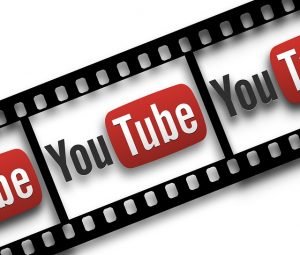
The OG in the video hood.
The first thing you need to do is ask yourself: is livestreaming going to boost your audience engagement enough to make it worth your while? While your response is going to depend on your unique circumstances, the answer for most organizations and brands is going to be a resounding, “Yes!”
In today’s social media world, rich media – and video in particular – is king. If you need proof, just look at the video world’s OG, YouTube. The number two social media platform worldwide, YouTube draws 1.58 billion active users to its channels each and every month, and that number is only going to get bigger from here on in.
Video’s capacity for meaningfully conveying non-verbal information and presenting rich content quickly makes it a powerful vehicle for prompting people to take action. Add to that livestreaming’s ability to forge a two-way connection with viewers, and you’ve got a powerhouse method for engaging your audience.
Livestreaming’s other great aspect? It’s not that hard. A smartphone and an Internet connection and you’re in business. Easy peasy. And after you’re done, you’ve got a wealth of rich media content that you can leverage over and over again, as well as a wealth of data from research that you can put to good use.
…But What Livestreaming Can Do for Event Marketing
All those data points and statistics I just threw at you sound awesome, if a bit esoteric, amirite? Right now, you’re probably thinking that you want to hear some real-world proof points. Ask and ye shall receive.
Interprose worked with a professional industry association that boasts a global membership. The association’s flagship event is its annual members meeting and conference, but only approximately 10 percent of its far-flung membership is able to actually attend the event in person. Recognizing that a large portion of its audience simply wouldn’t be able to be in the room, we launched a cost-effective video streaming campaign. Staffed by association volunteers armed with livestreaming-ready smartphone rigs, we took to Facebook Live to share video from nine different sessions over the course of four days. To say the results blew everyone away is an understatement.
Our nine live videos generated a mammoth aggregated audience of more than 100,000, resulting in 18,000 combined video views, likes, shares, and comments. Our broadcasts reached viewers in Brazil, Canada, Germany, Ireland, India, Japan, Mexico, Nigeria, Turkey, the U.S., and beyond. Responding to and interacting with viewers in real-time, we were able to capture and address questions, provide updated event info, and deliver a valuable, meaningful experience for those members who couldn’t be on-site.
Afterwards, we regularly promoted the archived videos throughout the year, extending their shelf life and value, and maintaining a high engagement level with the group’s membership. Not bad for an association with a highly specialized membership population, eh? In this case, livestreaming was definitely the right way to go.
Livestreaming: Event Marketing’s Secret Weapon
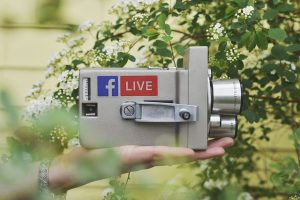
Not necessarily the livestreaming gear we’d recommend.
If you’re on the fence about whether livestreaming is the right choice for you, I would strongly recommend that you do consider adding it to your event marketing mix. It’s a secret weapon that can put your event engagement over the top – the power and influence of video is too important to ignore. And my guess is that it’s going to become a de facto part of how events are presented to audiences, if it isn’t already.
In our next instalment, we’re going to share best practices and things to avoid, and offer a comparative look at the various video platforms you have to choose from. We’ll also cover some gear options, and help you figure out which one is right for your individual situation.
“A minute of video is worth 1.8 millions words.”
~ Dr. James McQuivey, Forrester Research
If a picture is worth a thousand words, what is one second of video worth? According to Forrester’s Dr. James McQuivey, it’s 30,000 words. My math skills aren’t the best but here’s how the arithmetic breaks down: if a picture equals 1,000 words and video clocks in at 30 frames per second, then one second of video is worth 30,000 words. Multiply those 30,000 words by your typical 60-second video, and you get 1.8 million. If you figure that the 1.8 million number is per viewer, that’s a lot of yackety-yak that you can cut out by simply leveraging video instead of copy.
Shaky math aside, Dr. McQuivey’s statement is in line with what we know about the power of video. It’s wickedly influential with audiences hungry for rich media that engages the eyes, ears, mind, and heart. And livestreaming crosses the influence threshold even further, with its ability to deliver two-way real-time interactions between content producer and content consumer.
In the last installment of this event marketing Master Class series, I gave you a look at why livestreaming is nuclear-hot. We also started down the path of how you can successfully leverage it in your own event marketing plans. Now, we’re ready to truly dive into the how-to, do’s, and don’ts. So, buckle up, Buttercup, and let’s roll.
Pick a Video Platform, But Not Just Any Platform
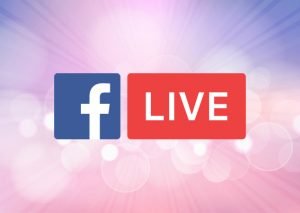
The young upstart
I explained above that livestreaming isn’t all that hard. While that’s true, you shouldn’t just jump in and start streaming away willy-nilly. There are other factors you need to take into consideration first. For example, which platform are you going to stream on? Like Goldilocks, you need to figure out which platform is going to be just right for you and your audience. Let’s look at three options.
Facebook Live
The new kid on the block, Facebook Live is livestreaming’s flavor of the month, for some very good reasons. Social engagement and virality is part of Facebook’s DNA; given its gargantuan population of active users, you can expect to see a lot of grassroots spread for your stream. The platform offers robust interactivity, with call-and-response features that allow real-time audience interactions, as well as solid native promotional tools to take advantage of. Furthermore, your streams are automatically archived once your broadcast is done.

Did I hear “baby goat yoga”?
So, what’s the downside? Facebook Live is available only to logged-in Facebook users. If your target audience isn’t active on the platform, you might want to take your stream elsewhere. And even if they are active users, consider how easy it is to become distracted by other content in your newsfeed (oooh, look…baby goat yoga).
Finally, you might get hit with guilt by association – Facebook controls what your viewers see after they’re done watching your broadcast, based on what its algorithm thinks they’ll be interested in. This means your brand could inadvertently be associated with content that you normally wouldn’t touch with a 10-foot pole.
YouTube
The OG in the livestreaming hood is of course, YouTube. Like Facebook Live, it offers massive upside in terms of audience size. It also has the added bonuses of not requiring viewers to log in; better video quality (especially with support for 4k ultra-high definition video); greater length and reliability; and your broadcasts can be archive on a branded channel.
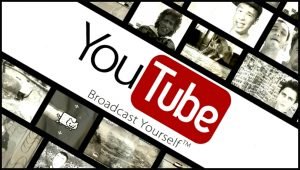
More than just funny cat videos
Where does YouTube fall short? Well, there’s a distinct lack of interactivity and it’s not as social engagement-friendly. That snappy comment you just posted on the last YouTube video you watched? It’s not going to be seen by your personal network the way it would’ve been on Facebook. And once more, you’ve got no control over the post-viewing experience.
What else is lacking? Effective promotional tools. Unless you’ve got a big following on YouTube or your video has enough oomph to go viral, you may not see as much of an impact as you hoped for.
DIY Platforms

Not for the fainthearted
If you want ultimate control over the viewer experience and who gets to see your livestream, there is one more option to consider: host it yourself. You can easily provide exclusive or members-only content to a select audience, and you have the final say over video length, quality, and what happens when your stream is over. Sounds pretty good, right? Not so fast.
Going this route is more complex than leveraging Facebook Live or YouTube – you have to have the underlying infrastructure needed for video streaming, archiving, and sharing. You’ll also be missing out on the vast audience share, power, and promotional tools that come with social media platforms.
Picking the right platform for your stream is critical. Once you’ve got it figured out, then it’s time for the next step – familiarizing yourself with the ins, outs, do’s, and don’ts of livestreaming.
Do That Thing You Do (or Don’t)
Okay, here comes the Great Big List of things to do and things to avoid, beginning with a recap of the last section. Pick your platform carefully. Do some research, check your metrics, and find out your audience’s destination of choice for consuming video.
Next, ask yourself: are you really ready to go live? Livestreaming isn’t hard, but it can be time consuming. You need to make sure you’ve got adequate resources for filming, publishing, and engaging with your viewers. Are you geared properly? Sure, you can git ‘er done with a smartphone and a network connection, however, you might want to consider investing a little bit of your budget an a gear upgrade. Skimping on staffing and equipment is a great way of ensuring your first livestreaming outing is half-baked and unpolished.
Do keep an eye on your schedule, too. You can’t just throw a livestream out there and expect people will find it easily. You may get a few wanderers who find your stream by accident but for the most part, you need to get hot on promoting it in advance of the day it goes live. Starting two to three weeks out, alert your audience of the day and time they can see your livestream. Get a graphic “coming soon!” drip campaign going via email and social. And on the big day, make sure you’re cross-promoting so that your followers on other platforms tune into your stream.

Live TV…it’s a ruff world out there
Live TV has proven repeatedly that there are umpteen ways things can go wrong when you’re on the air. Therefore, I can’t emphasize enough how important planning ahead and rigorous testing is. Remember Murphy’s Law: anything that can go wrong will go wrong.
As for what not to do, most importantly: don’t just do nothing. Livestreaming and video are far too powerful and influential to skip over. It might sound intimidating, but you can do this. Don’t be daunted – come up with a solid plan and stick with it. On the flip side, don’t try to livestream everything because that’s one sure-fire way to get overwhelmed. Save your most valuable sessions or events most likely to go viral for your video streams.
Finally, don’t wait until the last minute. Procrastination is not your friend. Start your planning process early, set reasonable milestone dates, and revisit your plan and schedule frequently.
Benjamin Franklin once said, “The best investment is in the tools of one’s own trade.” Almost two and a quarter centuries later, and his advice is still spot-on. If you’ve been following this Master Class series or checked out our webinar on event marketing and live social sharing, then you know it’s time to start talking about the tools and gear you’ll need to succeed at video livestreaming.
“Talking tools and gear” is often a sly euphemism for “let’s spend a ton of money!” but don’t get a bad case of the heebie-jeebies just yet. Yes, having the right tools for the job is absolutely essential. However, this doesn’t mean you need to run out and buy a Panavision camera, fuzzy boom mic, and an Avid board. I mean, I guess you could if you really want to look like one of those rugged, globetrotting film journalist types. But with digital cameras continuing to grow in sophistication while dropping in price, why would you?
The continued advance of digital camera technology is part of the reason behind the explosive growth in video and livestreaming. Pretty soon (and by that, I mean in approximately two months’ time), you’ll be able to record 4K video at 90fps and 1080p video at 240 fps on a smartphone, for heaven’s sake. So no, buying livestreaming gear doesn’t mean your bottom line has to go into the red…unless you really want to spring for that Panavision camera and Avid board setup.
Still, your choice of equipment will have a significant impact on the quality of your video and livestreams, therefore, it’s in your best interest to get the best setup that your budget allows. The good news is, you’ve got options. Let’s take a look at a few of them that will allow you to produce decent-quality video for streaming.
The Tiered Approach: Good
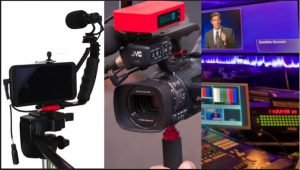
Good, better, best….which way will you go?
The easiest way to tackle the various choices in streaming gear is a tiered approach. Based on technical complexity, the end user experience, and DIY versus leaving it to someone else, we’re going with three tiers: good, better, and best. The first two tiers are DIY, the third is not.
The base tier is simple smartphone-based rig. Smartphone makers are in an arms race to see who can pack the most cameras, highest megapixel count, and best frame rates into a single device that still fits in the palm of your hand. Say hello to living out your secret Spielberg, Lucas, and Tarantino fantasies!
This growing sophistication in smartphones is good news for you. As long as you can position yourself physically close to your subject, the venue has adequate lighting, and you can maintain a solid network connection, a modern smartphone will allow you to do a surprisingly good job of capturing and livestreaming watch-worthy video from your event.

This could be you.
You’ll still need a few accessories to give your videos a bit more polish. I recommend adding an external microphone for crisper audio, a clip-on telephoto lens, and a high-quality tripod for image stabilization. And if you’re going to record for an extended length of time, you’ll want to consider adding in a high-capacity external battery. There’s nothing worse than running out of juice right in the middle of your stream.
How much will this type of rig set you back? About $250, easily within budget range for most organizations. Before you start doing your smartphone livestreaming happy dance, be aware there are some limitations and challenges you’ll need to deal with. You do need close physical proximity to your subject and good lighting. And if you’re using your personal device, don’t forget that it won’t be available for other purposes like making calls or engaging with social media audiences while you’re filming. One other extremely important detail: Facebook livestreams can’t be embedded on websites if a mobile phone is used for capturing the video.
A Step Up: Better
So, how do you overcome the limitations of smartphone livestreaming and still stay relatively cost-effective? One way is to step it up a bit to our next option – a camcorder. Yes, they still make them. They’re also still holding their own in the era of the video-enabled smartphone and digital camera. If you’ve got one or your budget will allow you to buy one, it’s definitely an option you should consider when livestreaming.
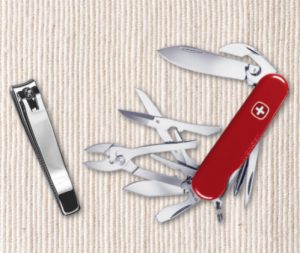
Be honest – which would you rather use?
Even with the advent of multi-camera, high-megapixel smartphones, the camcorder is still a go-to for capturing better-quality video. Even under the best conditions, the camcorder will outshine the smartphone in terms of picture and audio quality. Camcorders offer more robust zoom and greater storage options. Higher end models will often provide multi-channel surround sound, along with field of view, shutter speed, and white balance controls. It’s kind of like going from using a set of nail clippers to a Swiss Army multi-tool.
What are the drawbacks of going with a camcorder instead of a smartphone? First, they’re generally not designed for live network streaming, so you’ll need an external encoder with a network connection. If you go this route, you’ll want to think about getting a dedicated Internet connection – preferably one that’s wired (no fighting over bandwidth!), and at least 3Mbps of upstream bandwidth.
Ahhhh, but what about cost? It’s true that a camcorder rig is going to set you back a bit more than a smartphone rig will. Entry-level camcorder prices are all over the map, depending on quality, features, controls, and accessories (trust me, you’ll want to make sure you have an external shotgun microphone to boost sound quality). There are a number of entry-level options out there for under $200, but ask yourself: is this really the best thing for me to skimp on? An acceptable camcorder setup will likely run you $800 to $1,000; but as always, the better the quality, the higher the price.
King of the Hill: Best
The first two tiers are great options for those of you who are willing to go hands-on with your video livestreaming. If you’re less than confident about the DIY approach or you’ve got budget to spare, why not consider hiring a professional videographer?

See this guy? He knows what he’s doing.
There are a host of firms out there making a good living doing professional AV at events, for example PSAV and Freeman AV. These guys are pros – they intuitively understand how to capture visually appealing, highly engaging video content. They know how to work with lighting and sound, and can easily switch between broadcast-quality cameras. More likely than not, they’ll be able to tap into a direct feed from the onstage microphones and presentations, opening the door to more polished, compelling content for you to share with your audience.
There are some considerations to think about when deciding to go with a professional AV team. First, while you’ll be relieved of any burdens relating to onsite video production, you still have to make sure your Facebook page, YouTube channel, or other platform is optimized and ready to support the livestream from your AV crew. You’ll also need to make sure you’ve secured a dedicated, high-speed ‘net connection to forestall any interruptions to your feed.
And then there’s the question of cost. Professional AV doesn’t come cheap. After all, you’re paying for that wealth of technical and artistic expertise. Capturing four 1-hour keynote sessions is probably going to run you about $20,000 when using a professional AV team. If your wallet is now squealing, repeat after me: you get what you pay for.
Before You Go…
So there you have it, three options for capturing and streaming your video content. There are a lot of factors to take into account when figuring out what gear and equipment you’ll need to get your video rolling. But, it really comes down to how hands-on you want to be and what your budget looks like. Each of these three paths comes with its own benefits and challenges; it’s a matter of finding the one that’s best suited to your individual situation.
Before I close out this installment, I want to drop one last recommendation. Until now, we’ve come at this Master Class series from the perspective of the event or content producer but I do urge you to think about things from the other side of the fence, too. If you’re attending a conference, you’ll have ample opportunities to boost your social media profile through live tweeting, livestreaming, and other real-time sharing.
There’s a lot to see and do at conferences and events, which means the question becomes one of, “How do I best optimize my time?” Lucky for you, my colleague Laurie Davis has already drawn up a plan to help you become a conference superstar. You’ll find her sage advice here; I recommend you read her suggestions, then use them to make the most of your next professional conference or event.



